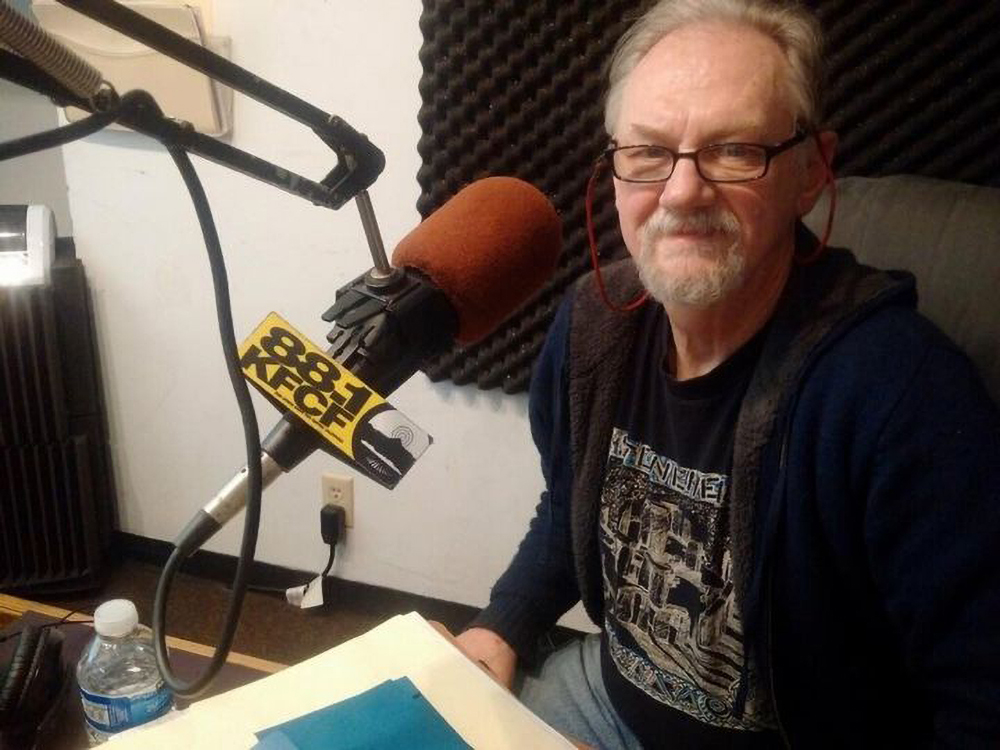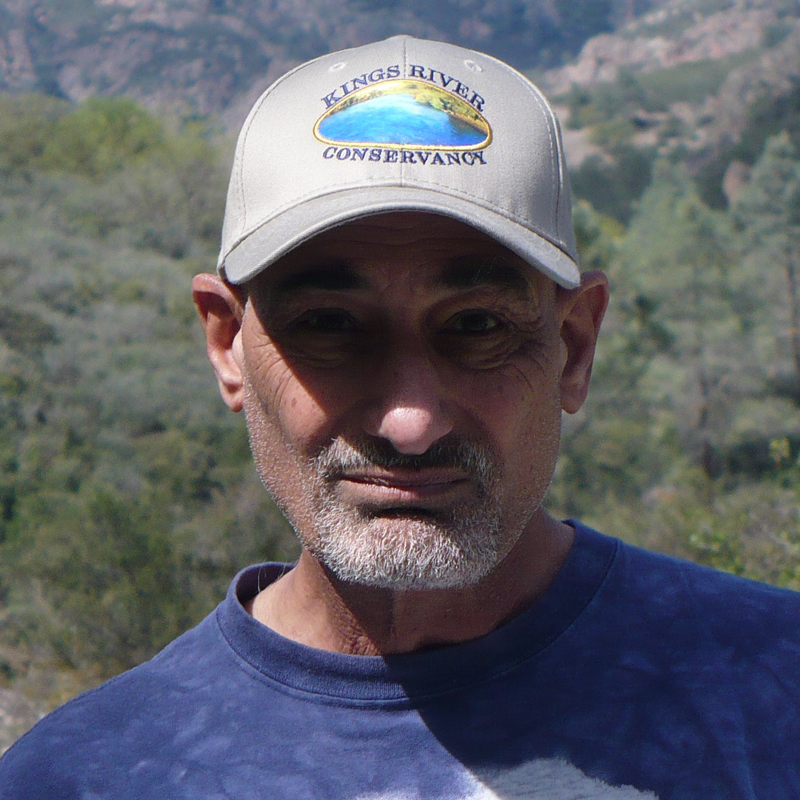I just hope we start thinking seven generations into the future about what we’re going to leave behind because I don’t believe that agriculture can last in this valley for the next few centuries. For one thing, we’ll fill it up with people. It’ll be like the San Fernando Valley.
—Lloyd Carter

Veteran Central Valley journalist Lloyd Carter has passed away. Born and raised in Fresno, he covered the Valley for United Press International (UPI) and the Fresno Bee. Carter’s life was dedicated to finding equity and fairness in how the state’s water is allocated.
He followed up a stellar career in the newspaper business with a law degree, working many years for the state Attorney General. Using his legal skill, Carter stayed active in the complex world of water as an advocate, delivering a clarion call about the future of this blessed and cursed landscape.
San Joaquin Valley born and bred, Carter came out of southeast Fresno, attended neighborhood schools and Roosevelt High, where he credits journalism teacher Margaret Kempfer for inspiring his interest in writing. He started newspaper work at Fresno City College, then at Fresno State and while a student joined UPI.
Carter was best known for his dogged investigation of the environmental disaster at the Kesterson Wildlife Refuge. For years, farm water runoff collected there, saturating the ecosystem with chemicals. Carter dug into the catastrophe early on, doing substantial research. And he kept after the issue, not deterred by official cover-ups, doing the hard footwork of newspaper reporting.
Author Mark Arax recalls that when writing his book, The Dreamt Land, he went through Carter’s massive collection of work and says that Carter was a master at his craft, “What’s so poignant about Lloyd’s death is that it comes at a time when we’re seeing the passing of real journalism, the kind of journalism he practiced in the Valley.”
It was a life-defining story, Arax relates. “He told the story of the poisoning of Kesterson and how it was creating this environmental nightmare where birds were attracted to this drainage water that came from big agriculture business in the Westlands Water District. Birds were attracted to that water, thinking it was pristine and blue, and from the sky, it certainly looked that way, but it wasn’t; it was a toxic brew that created these grotesque mutations.”
Carter told Fresno State professor Thomas Holyoke that the poisoning at Kesterson and the surrounding land is what got him to look more deeply for answers. Carter found some 240 farmers in the Westlands Water District who needed to drain toxic tailwater away to keep their own lands unpolluted.
“They built all these levies, and they started pumping the dirty water into these. One way to get rid of dirty water is to evaporate it. But of course, remembering that all the pollutants, and toxins, and metals, and salts get left behind.”
Carter met a scientist with the U.S. Fish and Wildlife Service (USFWS) studying the birds. “Felix Smith was the whistleblower on all this for the U.S. Fish and Wildlife Service. He opened an egg, and there were these little crippled, deformed birds. No wings. They opened a bunch of the eggs. No wings, no feet. The brain protruding out of the skull case, grotesque deformities.”
Deborah Blum broke the story in the Fresno Bee after Smith informed her, and then Carter took the story and did not let it go. He vividly depicts arriving on the scene: “I drove out to Kesterson. And the first thing when I got out of my car was the overwhelming smell of sulfur, or rotten eggs. Because Selenium exudes a sulfurous smell. And the other thing I noticed was there were dead birds everywhere on the ponds. I mean hundreds.”
Smith and his colleagues prepared a study on the disaster pointing to the trace element Selenium. Carter dug even deeper, as did other reporters, and the story became a national media sensation covered by major outlets like “60 Minutes.”
Smith remembers a phone call from his supervisor in Portland. “He was shouting over the telephone about the white paper, and it is not to be exposed to anyone, ‘destroy it.’ Well, here I was showing a National Geographic reporter and a representative of the Department of Interior what was going on. How in the hell can I destroy it?”
When the news hit Washington, D.C., the Bureau of Reclamation continued to cover-up with a faulty study of their own. But the follow-up reporting kept exposing more, Smith observes. “Lloyd just had a field day of tracking down the missteps and the miscues and the poor management of the Bureau.
“Well, here you had the biggest agricultural empire in the United States, Westlands Water District, raising hell to the [Fish and Wildlife] Service, raising hell to the Bureau. They wanted people fired. They wanted ’em canned, they wanted ’em moved outta the state. They were hell bent to get us outta here.”
Carter and colleague Gregg Gordon wrote, “Poison in the Valley,” a five-part report on Kesterson for UPI carried by major papers nationally. No major California paper carried the report, including the Fresno Bee. Such was the power of agribusiness.
Carter’s words had power, too. Another USFWS scientist who worked with Carter on those issues was Joe Skorupa. “Lloyd had such a wonderful nose for truth and a gift for putting truth into words on a printed page that all could easily understand. He was a big-picture guy who paid attention to details. He was so good at shining light exactly where those in power wanted darkness.”
Patricia Schifferle, like Carter, has gained deep expertise in both the science and politics of water in California. Working closely with him over the years gave her an appreciation of his thoughtful approach. Schifferle pointed out a couple of things that struck her working with Carter over the years: “His courage. He always was willing to take on the rich power brokers with searing honesty. His sense of justice. He saw clearly how the drainage pollution was impacting so many people.”
That is a quality observed by Arax as well. “There’s this notion that the people of the valley aren’t that important because they don’t have a unified voice on this. So, in the absence of that unified voice the voice of industry takes over. And this is what Lloyd was trying to document.”
Carter’s investigation, according to Schifferle, resulted in change. “Lloyd’s reporting helped to shine the public spotlight on the wildlife devastation from the irrigation drainage. As a result, the Legislature passed the Toxic Pits Cleanup Act that enacted many of the policy recommendations and legislative protections.”
For scientist Smith, Carter’s journalism was driven by a strong sense of fairness and justice. “I think Lloyd really was not concerned about the rich fat guy, but [rather] the little guy.
“He was concerned about the farm hands who fished; he sloughs down there for fish that were obviously taking up Selenium, but they were using the fish for food. He was concerned about the little guy in the field with all this stuff.
“And he was worried about the farm hand getting a fair shake in the valley, as opposed to the big guys in the Westlands irrigation district.”
Eventually, the Fresno Bee did not really want the kind of incisive reporting Carter was doing about agribusiness and water. So, he resigned and went to work for UPI again. When the wire service was on the skids, Carter decided to get a law degree and enhance his toolkit for investigation.
Then he worked for the state Attorney General in Fresno. His watchdog role continued with Save Our Streams, working alongside activist farmer Walt Shubin to advocate on behalf of the public and as host of Down in the Valley, a radio program on KFCF 88.1 FM for nearly two decades.
Environmental problems that Carter covered continue to plague the Valley. Even now in the Westlands Water District, Schifferle reports that “ponds in the name of ‘groundwater recharge’ are receiving multimillion-dollar grants from the Department of Water Resources financed through taxpayer bonds. Hopefully, safeguards will be required so these ‘recharge ponds’ do not create devastation, death and deformities.”
This industrialized valley was the source of Carter’s journalism. Arax ponders whether it was ironically the source of his demise. “He died of Parkinson’s disease, which is one of the great diseases of this valley, which is a consequence of the sacrifice zone. The killing zone.
“Studies at UCLA have shown that we have what’s called Parkinson’s Alley in the San Joaquin Valley, a high number of deaths from people exposed to pesticides, herbicides and all the other stuff that’s dumped on this middle part of California in the name of industrial operations.”
Arax pictures Carter now as an indelible part of the Valley’s landscape. “You look for his legacy, and it’s pretty easy to find. It’s right there in the land. Lloyd put a mark, a dent, his dent in the land.” Carter lived and died a Valley citizen. He was 76 years old.


Sad to hear. And thanks to Vic for bringing this to the C.A.